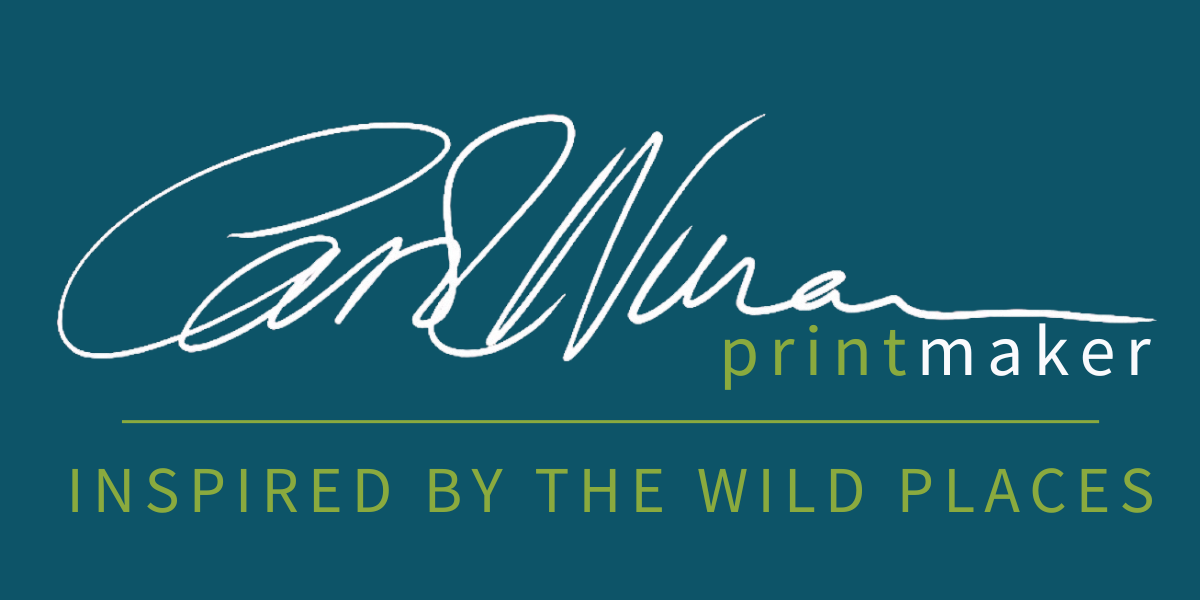The Art of Original Printmaking: Why Prints Deserve Their Place in Fine Art
14 August 2023
"Is that really original art?" The question hangs in the air as someone examines one of my prints at a gallery showing. I smile, because I've heard this before—and it's a question that deserves a thoughtful answer.
The Misconception We Need to Address
When many people hear the word "print," they envision mass production—hundreds of identical copies churned out by machines, each one indistinguishable from the next. A mechanical reproduction rather than an artist's creation.
But what if I told you that an original print is actually closer to a painting in its creative process than it is to a poster from your local gift shop?
A collagrpaph plate made using paint, mount board and a blow torch
Original Art vs. Reproduction: Understanding the Crucial Difference
So, is a print an original? Absolutely, yes—when the artist conceives and executes the entire printmaking process.
Here's what makes it original:
The artist creates the plate or matrix by hand
The artist personally inks and prints each piece
The artist's direct involvement controls every aspect of the creation
The resulting artwork contains unique variations and characteristics
The Value of Limited Editions
Some original prints are truly one-of-a-kind, while others belong to limited editions. Even in these editions, each print is individually inked and pulled by the artist's hand. I personally work in what's called "variable editions"—though I use the same plate I vary the colour palette to reflect the way the light, weather conditions, and seasons change the same landscape, so that each print develops its unique character. No two will ever be identical, even when I'm trying to create consistency.
When I sign and number each print, I'm not just adding authentication—I'm acknowledging each piece as an individual creation within a deliberately limited collection.
The Intimate Journey of Creating an Original Print
As an artist who specialises in contemporary landscape and seascape printmaking, let me invite you into my studio for a moment. Imagine watching as I carefully build textures from a variety of materials onto a plate, my hands working deliberately with PVA, wood cement, textiles, feathers and plants. Every material I add to this collage, every texture I create will become part of the final image.
This plate—whether made of linoleum, metal, wood, or another material—is my canvas. But unlike a painter who sees their work emerge directly, I work in reverse, imagining how each mark will eventually translate to paper.
The magic happens during the inking process. I carefully apply colours by hand, making decisions about tone, contrast, depth, and feeling but it is all a bit of a mystery and a leap of faith because what I’m adding to the plate surface and how it will print is to some extent not immediately obvious. Sometimes I'll blend inks directly on the plate, creating effects that can never be perfectly duplicated. Then comes the moment of revelation—when I press paper against the inked plate and, with either a press or hand burnishing, transfer my vision onto the paper and there lies the element of serendipity.
When I pull the paper off the plate, I see the result of this intimate collaboration between me, the artist, the materials and inks I’ve chosen to use, and the process. Each print carries the evidence of my hand, my decisions, and even the happy accidents that make art so wonderfully human.
Bringing Original Printmaking Into Your Home
When you choose an original print for your space, you're not settling for something less than an "original." You're embracing a different but equally authentic form of artistic expression—one with centuries of rich tradition behind it.
The print on your wall represents countless decisions, years of developed technique, and a direct connection to the artist's vision and touch. It creates that sense of place and identity you're looking for in your home, with its own unique story to tell.
How to Identify an Original Print
Wondering how to tell if a print is truly original? Look closely at the edges of the image—you'll often find a subtle indent where the plate pressed into the paper. This "plate mark" is one hallmark of hand-pulled prints. If the image extends to the paper's edge, look for a naturally deckled (slightly rough) edge rather than machine-cut perfection.
But beyond these physical traits, an original print carries an ineffable quality—the presence of the artist's hand and intention in every line and tone.
My Invitation To You
I invite you to explore my detailed printmaking process [here and here] Follow along as I capture the wild beauty of Scotland's West Coast or the serene landscapes of Northumberland through my printmaking practice.
By understanding the care, skill, and artistic decisions that go into each original print, I hope you'll see these works as they truly are—not reproductions, but authentic artistic creations that offer something unique and valuable to your collection. You can visit the various Collections from the GALLERY link in the top menu.
What aspects of printmaking fascinate you most? I'd love to hear your thoughts in the comments below.





